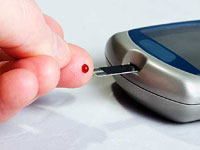Intense therapy kills diabetics
By Anastasia Tomazhenkova: The National Institutes of Health announced that they has stopped aggressive diabetes treatment in a major trial after a safety review showed that pushing blood sugar to record low levels sharply increased patients' risk of death.

An unexpected number of deaths among patients receiving intense therapy to lower their blood sugar forced to cut short part of a major study on diabetes and heart disease.
The therapy was aimed at reducing to normal levels the blood sugar of type 2 diabetics at especially high risk of heart attack and stroke. There were 257 deaths among people receiving intense diabetes treatment, compared to 203 in the standard treatment group, NIH's National Heart Lung and Blood Institute said.
Some 10,251 people were enrolled in the Action to Control Cardiovascular Risk in Diabetes study, which had been under way for four years.
"A thorough review of the data shows that the medical treatment strategy of intensively reducing blood sugar below current clinical guidelines causes harm in these especially high-risk patients with type 2 diabetes," said Dr. Elizabeth G. Nabel, director of the Institute.
"Though we have stopped this part of the trial, we will continue to care for these participants, who now will receive the less-intensive standard treatment. In addition, we will continue to monitor the health of all participants, seek the underlying causes for this finding, and carry on with other important research within ACCORD," she said in a statement.
The study focuses on treatments for adults with type 2 diabetes, the most common form, who are at especially high risk for heart disease.
The action was recommended by an independent advisory group of experts in diabetes, heart disease, epidemiology, patient care, biostatistics, medical ethics and clinical trial design that has been monitoring ACCORD since it began.
Participants will continue to receive blood sugar treatment from their study clinicians until the planned trial conclusion in June 2009.
NHLBI said the intensive treatment group had a target blood sugar goal of less than 6 percent, which is similar to blood sugar levels in adults without diabetes. The standard treatment group aimed for a target similar to what is achieved, on average, by those with diabetes in the United States, of 7 to 7.9 percent.
Diabetes is a syndrome characterized by disordered metabolism and inappropriately high blood sugar (hyperglycaemia) resulting from either low levels of the hormone insulin or from abnormal resistance to insulin's effects coupled with inadequate levels of insulin secretion to compensate. The characteristic symptoms are excessive urine production (polyuiria), excessive thirst and increased fluid intake (polydipsia), and blurred vision. These symptoms are likely absent if the blood sugar is only mildly elevated.
Subscribe to Pravda.Ru Telegram channel, Facebook, RSS!


